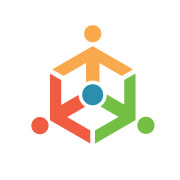What is a Participation Quiz?
 A Participation Quiz /Group Feedback is a strategy to help establish or reinforce norms for group work in a cooperative environment. While students work together in their group on a math task, the teacher takes public notes—on a document camera, white board, or chart paper—about the quality of their group work (social moves) and the quality of their mathematical discussions (math moves). The teacher can take notes on how students work together, their use of classroom norms, or the specific language they use to communicate their mathematical ideas.
A Participation Quiz /Group Feedback is a strategy to help establish or reinforce norms for group work in a cooperative environment. While students work together in their group on a math task, the teacher takes public notes—on a document camera, white board, or chart paper—about the quality of their group work (social moves) and the quality of their mathematical discussions (math moves). The teacher can take notes on how students work together, their use of classroom norms, or the specific language they use to communicate their mathematical ideas.
Read more about the Participation Quiz (secondary) and Groupwork Feedback (elementary) in the Math Teaching Toolkit.
Why would I use this strategy?
Publicly taking notes on students’ interactions allows the teacher to communicate the behaviors they wish to encourage and value, as well as mitigating perceived status differences between students—that is, highlighting strengths of students who are not perceived to be strong in math. Some teachers assign each group a grade at the end of a Participation Quiz/Group Feedback. Other teachers prefer to focus on the feedback rather than giving it a score. This protocol might be named differently, for example, “Group Work Feedback,” to reflect the teacher’s objective.
When do I use this strategy?
This strategy can be used whenever students are working in collaborative groups.
How do I use this strategy?
1. Choose a worthy task.
The teacher chooses a task that is accessible, challenging, important, and requires students to read and talk together. If a task is too hard, the teacher may spend more time answering group questions than observing, and if a task is too routine, students may work on it individually since little collaboration will be required.
2. Decide on a focus.
The teacher decides which group norms or Standards of Mathematical Practice they want students to focus on. This decision depends on the context of the classroom. Early in the year, the teacher may focus on establishing norms, such as getting a quick start (reading problem promptly and making sure group understands), working together (heads leaning in and working in the middle of the group), and asking their group questions before asking the teacher. Later in the year, the teacher may focus on refining a norm that a particular class is struggling with, such as making statements with reasons, or the teacher may choose to highlight strengths of specific students that have low status (students who are not generally seen as strong in math).
3. Communicate the focus to students.
The teacher lets his/her class know that the lesson will be structured as a Participation Quiz/Group Feedback. The teacher is clear about what they are looking for and uses language that students understand. The teacher explains that they will publicly record a snapshot of the students working together in their groups.
For example, the teacher can say that they is looking for:
❖ “because” statements (addresses “making statements with reasons”).
❖ students leaning in (addresses “working together on the same problem”).
❖ group questions only.
As students work, the teacher publicly records statements about how groups are working together. This can be done on a document camera, white board, or chart paper. The recording sheet is split into as many spaces as there are groups. Sometimes groups do not notice this public documentation, while other times they pay attention and change their behaviors to meet the norms.
4. Debrief the notes taken.
The teacher takes time before the end of class or in the middle of the task to debrief. Time is given for students to read comments. The teacher highlights key evidence that supports the group work norms. The focus on group work norms to start the class and then end the lesson can be a powerful way to reinforce the kinds of cooperative behaviors that teachers want to establish. When students are used to seeing this structure, teachers can use these public notes as a “quiz” to assess students and groups on their group work skills. Generally, the focus should be on positive behaviors, although over time honest critiques of behavior may be included as well.
This page was last updated on June 30, 2022

